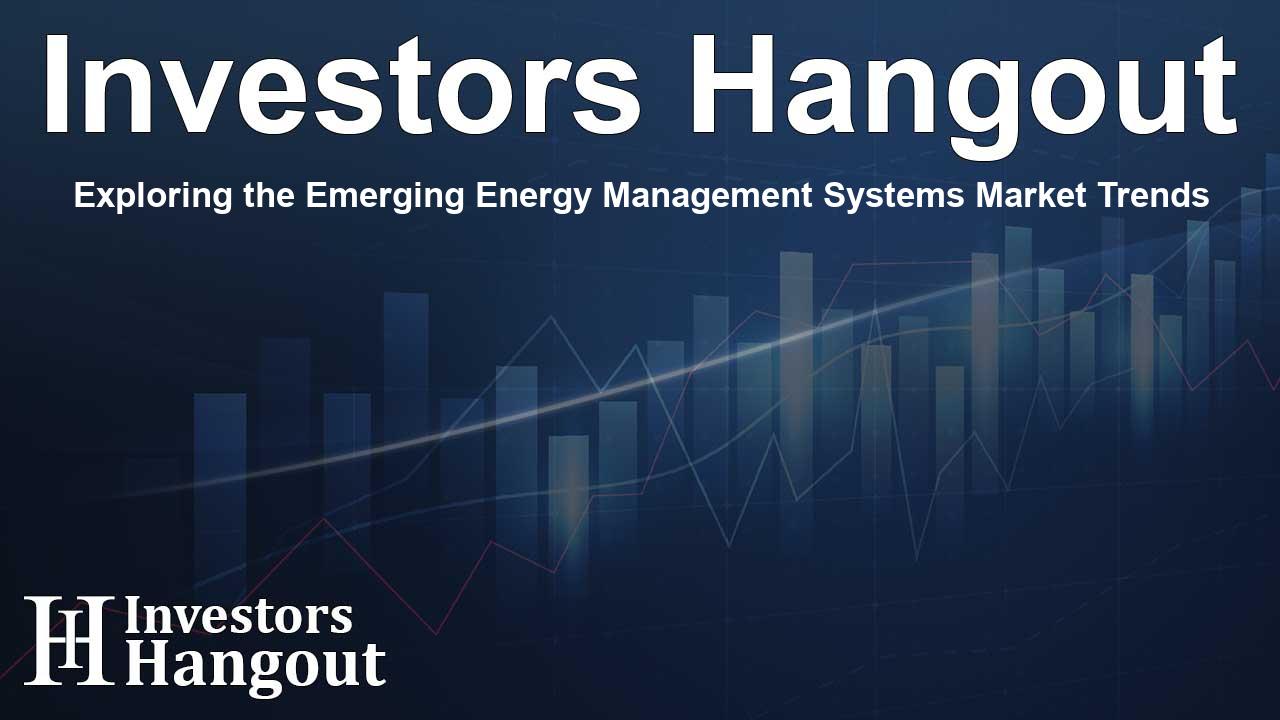Exploring the Emerging Energy Management Systems Market Trends

Energy Management Systems Market Overview
The Energy Management Systems (EMS) market is experiencing an impressive growth trajectory, with a projected value of USD 129.22 billion on the horizon. This significant leap is largely attributed to substantial investments in smart grid technologies and the rapid proliferation of Internet of Things (IoT) devices. With a growth rate of 14.11% anticipated between 2024 and 2032, organizations recognize the importance of optimizing energy usage to not only reduce costs but also to advance environmental sustainability efforts.
Market Insights and Drivers
Globally, there is an increasing awareness of environmental issues, prompting businesses to reassess their energy consumption strategies. EMS enables real-time monitoring and management of energy usage, leading to actionable insights that can significantly improve efficiency. The rigorous standards set by governments worldwide regarding energy efficiency further embolden many businesses to adopt EMS solutions. In the United States, significant funding initiatives spearheaded by the government have promoted the adoption of these technologies. The Department of Energy remains a cornerstone of financial support, injecting a considerable amount into the development of innovative EMS solutions.
Investment Trends and Governmental Support
Investments under programs like the American Recovery and Reinvestment Act, which allocated funds for smart grid technologies, evidenced the importance of advanced energy management systems in today’s commercial landscape. This reflects a shift toward a more energy-conscious society, where businesses are encouraged to meet environmental and regulatory requirements while minimizing operational costs through enhanced energy utilization.
Key Players and Competitive Landscape
As the EMS market expands, several industry players are at the forefront of innovation, providing diverse solutions tailored to various needs. Notable names include Siemens with its Desigo CC and Sentron Power Manager, Schneider Electric's EcoStruxure Power, and Honeywell's solutions aimed at fostering energy efficiency. These companies lead their segments by investing heavily in research and development, driven by a commitment to delivering state-of-the-art energy management solutions.
Significance of Hardware and Software Components
In examining the structure of the EMS market, hardware and software play pivotal roles. The hardware segment accounted for 60% market share, as systems rely on physical components such as sensors and controllers to operate effectively. This infrastructure is crucial for gathering data, which informs energy management strategies across residential, commercial, and industrial sectors.
Segment Analysis: Identification of Growth Areas
The robust demand for energy management systems is evident in various segments. Industrial energy management systems maintained the largest market share, primarily due to high energy consumption in sectors such as manufacturing. The emphasis on reducing operational costs while adhering to stringent regulations drives industries to invest in EMS.
Forecasting Regional Markets
In terms of regional dynamics, North America presently commands a significant share of the EMS market, thanks to its regulatory support for energy efficiency and substantial investment in smart infrastructures. Conversely, the Asia-Pacific (APAC) region is projected to exhibit the fastest growth rate, fueled by rapid urbanization and increasing energy demands. Countries such as China and India are leading the charge in implementing smart grid technologies and renewable energy sources, indicating a transformative shift in how energy is managed and consumed.
Recent Developments in Energy Management Solutions
Recent innovations within the EMS landscape reflect the industry's evolutionary nature. Noteworthy advancements include Siemens’ launch of the Desigo CC, which integrates advanced energy management capabilities within building management systems. Furthermore, Honeywell's Energy Manager 3.0 aims to enhance operational efficiency through real-time analytics, illustrating the trend towards cloud-based energy solutions. The partnership between Schneider Electric and Google Cloud showcases a commitment to developing platforms that support sustainability and superior energy management strategies.
Frequently Asked Questions
What is the projected market size for Energy Management Systems by 2032?
The Energy Management Systems market is expected to reach USD 129.22 billion by 2032.
What are the main drivers behind the growth of the EMS market?
The growth is primarily driven by investments in smart grid technologies, increasing energy efficiency regulations, and the rising demand for IoT devices.
Who are the leading players in the Energy Management Systems market?
Key players include Siemens, Schneider Electric, Honeywell, General Electric, and ABB, among others.
Which region shows the fastest growth in the EMS market?
The Asia-Pacific region is anticipated to grow the fastest due to urbanization and energy demands.
Why is hardware considered crucial in energy management systems?
Hardware components, such as sensors and controllers, are essential for data collection, monitoring, and ensuring the effective operation of energy management systems.
About Investors Hangout
Investors Hangout is a leading online stock forum for financial discussion and learning, offering a wide range of free tools and resources. It draws in traders of all levels, who exchange market knowledge, investigate trading tactics, and keep an eye on industry developments in real time. Featuring financial articles, stock message boards, quotes, charts, company profiles, and live news updates. Through cooperative learning and a wealth of informational resources, it helps users from novices creating their first portfolios to experts honing their techniques. Join Investors Hangout today: https://investorshangout.com/
Disclaimer: The content of this article is solely for general informational purposes only; it does not represent legal, financial, or investment advice. Investors Hangout does not offer financial advice; the author is not a licensed financial advisor. Consult a qualified advisor before making any financial or investment decisions based on this article. The author's interpretation of publicly available data shapes the opinions presented here; as a result, they should not be taken as advice to purchase, sell, or hold any securities mentioned or any other investments. The author does not guarantee the accuracy, completeness, or timeliness of any material, providing it "as is." Information and market conditions may change; past performance is not indicative of future outcomes. If any of the material offered here is inaccurate, please contact us for corrections.